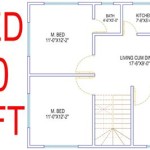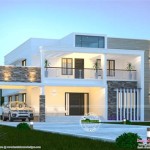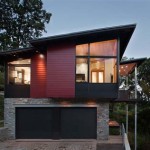Home blueprints, also known as “house plans,” are detailed blueprints that guide the design, construction, and renovation of a house. They provide a comprehensive overview of the home’s layout, including room dimensions, material specifications, electrical and plumbing systems, and other essential details. House plans are crucial for obtaining building permits, ensuring structural integrity, and facilitating communication between architects, engineers, contractors, and homeowners.
The process of creating house plans involves collaboration between architects and homeowners. Architects provide expertise in design, functionality, and building codes, while homeowners share their vision and preferences. By combining these perspectives, house plans are tailor-made to meet the specific needs and desires of each homeowner. House plans are not merely blueprints but blueprints that give life to a home’s vision, ensuring that it becomes a reflection of its occupants’ lifestyle and aspirations.
In the following sections, we will delve deeper into the significance of house plans, exploring their elements, benefits, and considerations. Whether you’re planning a new home, renovating an existing one, or simply curious about the intricacies of home design, this article will provide valuable insights into the world of house plans.
At the core of any successful home building or renovation project lies a well-defined set of house plans. These plans serve as the blueprint for your dream home, guiding every aspect of its design and construction. To ensure that your house plans are comprehensive and effective, consider the following key points:
- Reflect your vision: Plans should align with your lifestyle and aspirations.
- Detailed floor plans: Accurately depict room layouts, dimensions, and flow.
- Exterior elevations: Showcase the home’s exterior design and facade.
- Structural specifications: Outline materials, engineering, and building codes.
- Electrical and plumbing plans: Map out wiring, outlets, fixtures, and piping.
- Material selections: Specify finishes, flooring, cabinetry, and appliances.
- Site plan: Illustrate the home’s placement on the property.
- Energy efficiency: Incorporate sustainable design elements and energy-saving measures.
- Accessibility features: Consider universal design principles for inclusivity.
- Professional consultation: Collaborate with architects and engineers for expertise.
By addressing these key points, you can ensure that your house plans are a true reflection of your vision, providing a solid foundation for a successful building project.
Reflect your vision: Plans should align with your lifestyle and aspirations.
Your house plans should be a reflection of your unique lifestyle and aspirations. They should embody your dreams for your home, taking into account your daily routines, personal preferences, and long-term goals. Consider the following aspects when tailoring your house plans to your vision:
- Family dynamics and needs: Plan for the number of bedrooms and bathrooms required, as well as communal spaces that cater to your family’s interactions and activities.
- Personal interests and hobbies: Dedicate spaces for your hobbies and passions, whether it’s a dedicated art studio, music room, or home gym.
- Entertaining and social gatherings: Designate areas for hosting guests, such as a spacious living room, dining area, or outdoor entertaining space.
- Future plans and adaptability: Consider how your needs may change over time and design flexible spaces that can adapt to future requirements, such as adding an extra bedroom or converting a spare room into a home office.
By carefully considering your lifestyle and aspirations, you can create house plans that truly reflect your vision and provide a space that is both functional and meaningful.
Detailed floor plans: Accurately depict room layouts, dimensions, and flow.
Detailed floor plans are essential for visualizing the layout and functionality of your home. They provide a precise representation of each room’s dimensions, shape, and relationship to other spaces. By carefully planning the flow of your home, you can create a comfortable and efficient living environment.
- Room dimensions: Accurate room dimensions are crucial for furniture placement, space planning, and ensuring that your home meets building code requirements.
- Room layout: The layout of each room should facilitate natural movement and interaction. Consider the placement of doors, windows, and furniture to create a functional and inviting space.
- Flow between rooms: The flow between rooms should be seamless and intuitive. Avoid creating dead-end spaces or awkward transitions. Instead, design a floor plan that allows for easy movement throughout the home.
- Traffic patterns: Anticipate how people will move through your home and design the floor plan accordingly. Create clear pathways and avoid bottlenecks to ensure smooth traffic flow.
Well-detailed floor plans serve as a roadmap for your home’s construction and a valuable tool for visualizing and refining your design. They help you make informed decisions about space allocation, furniture placement, and overall functionality, ultimately creating a home that meets your needs and aspirations.
Exterior elevations: Showcase the home’s exterior design and facade.
Exterior elevations are detailed drawings that depict the exterior appearance of your home from different angles, typically the front, rear, and sides. They showcase the architectural style, materials, and overall design of your home’s facade. Exterior elevations play a crucial role in:
- Establishing curb appeal: Exterior elevations create the first impression of your home and contribute significantly to its curb appeal. They influence how your home is perceived by visitors and passersby.
- Defining architectural style: The architectural style of your home is conveyed through its exterior elevations. Whether it’s traditional, modern, contemporary, or a blend of styles, the elevations capture the essence of your home’s design.
- Guiding material selection: Exterior elevations specify the materials used for your home’s exterior, such as siding, roofing, stone, and brick. These materials impact the durability, energy efficiency, and aesthetic appeal of your home.
- Ensuring structural integrity: Exterior elevations work in conjunction with structural plans to ensure the structural integrity of your home’s exterior. They indicate the placement of windows, doors, and other openings, which must be carefully planned to maintain the home’s overall stability.
Well-crafted exterior elevations not only enhance the aesthetic appeal of your home but also provide valuable information for construction and maintenance. They serve as a visual representation of your home’s exterior design, ensuring that your vision is translated into a beautiful and functional reality.
Structural specifications: Outline materials, engineering, and building codes.
Structural specifications are detailed plans that outline the materials, engineering calculations, and building codes that govern the structural integrity of your home. These specifications ensure that your home is safe, stable, and compliant with local building regulations.
- Materials specification: This section specifies the materials to be used for structural components such as framing, foundation, walls, and roofing. It includes information on the type, grade, and strength of materials, as well as their compliance with building codes.
- Engineering calculations: Structural engineers perform calculations to determine the loads and forces that will act on your home. These calculations ensure that the structural components are designed to withstand these forces safely and prevent structural failure.
- Building code compliance: Structural specifications must adhere to local building codes, which set minimum standards for structural safety. Building codes vary by region and are based on factors such as seismic activity, wind loads, and snow loads.
- Foundation design: The foundation is the base of your home and plays a crucial role in its structural stability. Structural specifications outline the type of foundation to be used, its depth, and the materials it will be constructed from.
Well-defined structural specifications are essential for ensuring the safety and longevity of your home. They provide a roadmap for contractors to follow during construction and serve as a valuable reference for future maintenance and renovations.
Electrical and plumbing plans: Map out wiring, outlets, fixtures, and piping.
Electrical plans: Electrical plans provide a detailed layout of the electrical system in your home, including the location of wiring, outlets, switches, and light fixtures. These plans ensure that your home has a safe and functional electrical system that meets building codes and your specific needs.
Wiring: Electrical plans specify the type and size of wiring to be used throughout your home. This is crucial for ensuring that the electrical system can handle the electrical load of your appliances and devices without overheating or causing electrical fires.
Outlets and switches: Electrical plans indicate the placement of outlets and switches, allowing you to plan for convenient access to power and lighting in each room. The number and location of outlets and switches should be carefully considered to accommodate your lifestyle and the placement of furniture and appliances.
Light fixtures: Electrical plans also include the location and type of light fixtures to be installed. This information helps you visualize the lighting scheme for your home and ensure that each room has adequate illumination.
Well-designed electrical plans are essential for a safe and functional electrical system in your home. They provide a clear guide for electricians to follow during installation, ensuring that your home meets electrical safety standards and your daily electrical needs are met.
Material selections: Specify finishes, flooring, cabinetry, and appliances.
Finishes: Finishes refer to the materials and treatments applied to surfaces in your home, such as paint, wallpaper, tile, and moldings. Material selections for finishes should consider factors such as durability, style, and maintenance. They can significantly impact the overall aesthetic and ambiance of your home.
Flooring: Flooring choices include materials such as hardwood, tile, carpet, and laminate. Each material offers unique characteristics in terms of durability, comfort, and style. Material selections for flooring should take into account the intended use of each room, as well as personal preferences and budget.
Cabinetry: Cabinetry plays a crucial role in both the functionality and aesthetics of your home. Material selections for cabinetry include wood, laminate, and thermofoil. The choice of cabinetry should consider factors such as durability, storage needs, and overall design style.
Appliances: Appliances are essential components of a modern home, providing convenience and functionality. Material selections for appliances should consider factors such as energy efficiency, features, and style. Matching appliances in terms of finish and design can create a cohesive and visually appealing kitchen or laundry space.
Well-thought-out material selections for finishes, flooring, cabinetry, and appliances are essential for creating a home that is both beautiful and functional. These choices should reflect your personal style, lifestyle, and budget, ensuring that your home is a reflection of your unique taste and preferences.
Site plan: Illustrate the home’s placement on the property.
A site plan is a scaled drawing that shows the location of your home on your property. It illustrates the relationship between your home and the surrounding landscape, including driveways, walkways, patios, and any other structures on your land.
- Property lines and setbacks: The site plan outlines the boundaries of your property and indicates any setbacks or easements that may restrict where you can place your home.
- Home placement and orientation: The site plan shows the exact location and orientation of your home on the property. This is important for factors such as solar access, privacy, and views.
- Driveways and walkways: The site plan indicates the location and dimensions of driveways and walkways, ensuring that they are properly designed for access and safety.
- Outdoor structures and landscaping: The site plan may also include the placement of outdoor structures such as patios, decks, sheds, and pools, as well as the layout of landscaping elements like trees, shrubs, and flower beds.
A well-designed site plan is essential for ensuring that your home is properly integrated with its surroundings and that the outdoor space is both functional and aesthetically pleasing. It also serves as a valuable tool for obtaining building permits and coordinating with contractors during construction.
Energy efficiency: Incorporate sustainable design elements and energy-saving measures.
Incorporating energy efficiency into your house plans is crucial for reducing your environmental impact and lowering your energy bills. By implementing sustainable design elements and energy-saving measures, you can create a home that is both comfortable and cost-effective.
Sustainable design elements: Sustainable design elements focus on reducing the environmental impact of your home throughout its lifecycle. This includes using eco-friendly building materials, incorporating passive solar design principles, and optimizing natural ventilation. By embracing sustainability, you can minimize your home’s carbon footprint and contribute to a greener future.
Energy-saving measures: Energy-saving measures are specific technologies and practices that reduce your home’s energy consumption. These measures can range from installing energy-efficient appliances and lighting to implementing smart home systems that optimize energy usage. By adopting energy-saving measures, you can significantly lower your energy bills and enhance the overall efficiency of your home.
Renewable energy sources: Integrating renewable energy sources into your house plans can further reduce your reliance on fossil fuels and promote energy independence. Consider installing solar panels to harness the sun’s energy or explore geothermal heating and cooling systems to utilize the earth’s natural temperature. By embracing renewable energy, you can make your home more sustainable and contribute to a cleaner energy future.
Energy efficiency certification: To ensure that your home meets the highest standards of energy efficiency, consider obtaining an energy efficiency certification. This certification provides independent verification of your home’s energy performance and can increase its value and marketability. By investing in energy efficiency, you can create a home that is not only comfortable and cost-effective but also environmentally responsible.
Incorporating energy efficiency into your house plans is an investment in your home’s future. By implementing sustainable design elements, energy-saving measures, and renewable energy sources, you can create a home that is environmentally friendly, cost-effective, and a joy to live in.
Accessibility features: Consider universal design principles for inclusivity.
Creating an inclusive home environment is essential for individuals of all abilities. By incorporating accessibility features into your house plans, you can ensure that your home is welcoming and comfortable for everyone, regardless of their age, physical abilities, or cognitive needs.
- Accessible entrances and doorways:
Provide ramps or gradual slopes at entrances, and ensure that doorways are wide enough for wheelchairs and other mobility devices to pass through easily.
- Non-slip flooring and grab bars:
Install non-slip flooring throughout the home, particularly in bathrooms and kitchens. Add grab bars in showers, bathtubs, and near toilets for added stability and support.
- Lever handles and accessible controls:
Replace traditional doorknobs with lever handles that are easier to grip and operate. Consider installing accessible controls for appliances, lighting, and thermostats, ensuring they are within reach and easy to use for individuals with limited mobility.
- Adequate lighting and visual cues:
Provide ample lighting throughout the home, including natural light and artificial lighting. Use contrasting colors and textures to create visual cues that assist individuals with visual impairments in navigating the space.
Incorporating accessibility features into your house plans not only benefits individuals with disabilities but also creates a more comfortable and functional living environment for everyone. By embracing universal design principles, you can create a home that is inclusive, safe, and enjoyable for all.
Professional consultation: Collaborate with architects and engineers for expertise.
Working with experienced architects and engineers is crucial for successful house plan development. Architects bring their expertise in design, space planning, and building codes to the table. They collaborate with you to translate your vision into a functional and aesthetically pleasing design that meets your specific needs and preferences.
Architects are responsible for creating detailed drawings and specifications that guide the construction process. They ensure that your house plans comply with building codes and regulations, ensuring the structural integrity and safety of your home. Their knowledge of materials, construction methods, and design principles ensures that your home is both beautiful and functional.
Engineers play a vital role in the structural design of your home. They perform calculations to determine the loads and forces that will act on your home, and design structural elements such as foundations, beams, and columns to withstand these forces safely. Engineers also collaborate with architects to ensure that the design is structurally sound and meets building code requirements.
The collaborative efforts of architects and engineers ensure that your house plans are not only visually appealing but also structurally sound and compliant with building codes. Their expertise helps you avoid costly mistakes and ensures that your home is built to last. By investing in professional consultation, you gain access to a wealth of knowledge and experience, ultimately resulting in a home that meets your expectations and provides you with years of comfort and enjoyment.
Professional consultation is an invaluable investment in the success of your house plan development. Architects and engineers bring a wealth of knowledge and expertise to the table, ensuring that your home is both beautiful and structurally sound. Their collaboration helps you avoid costly mistakes and ensures that your home is built to last, providing you with years of comfort and enjoyment.







.jpg)

Related Posts








